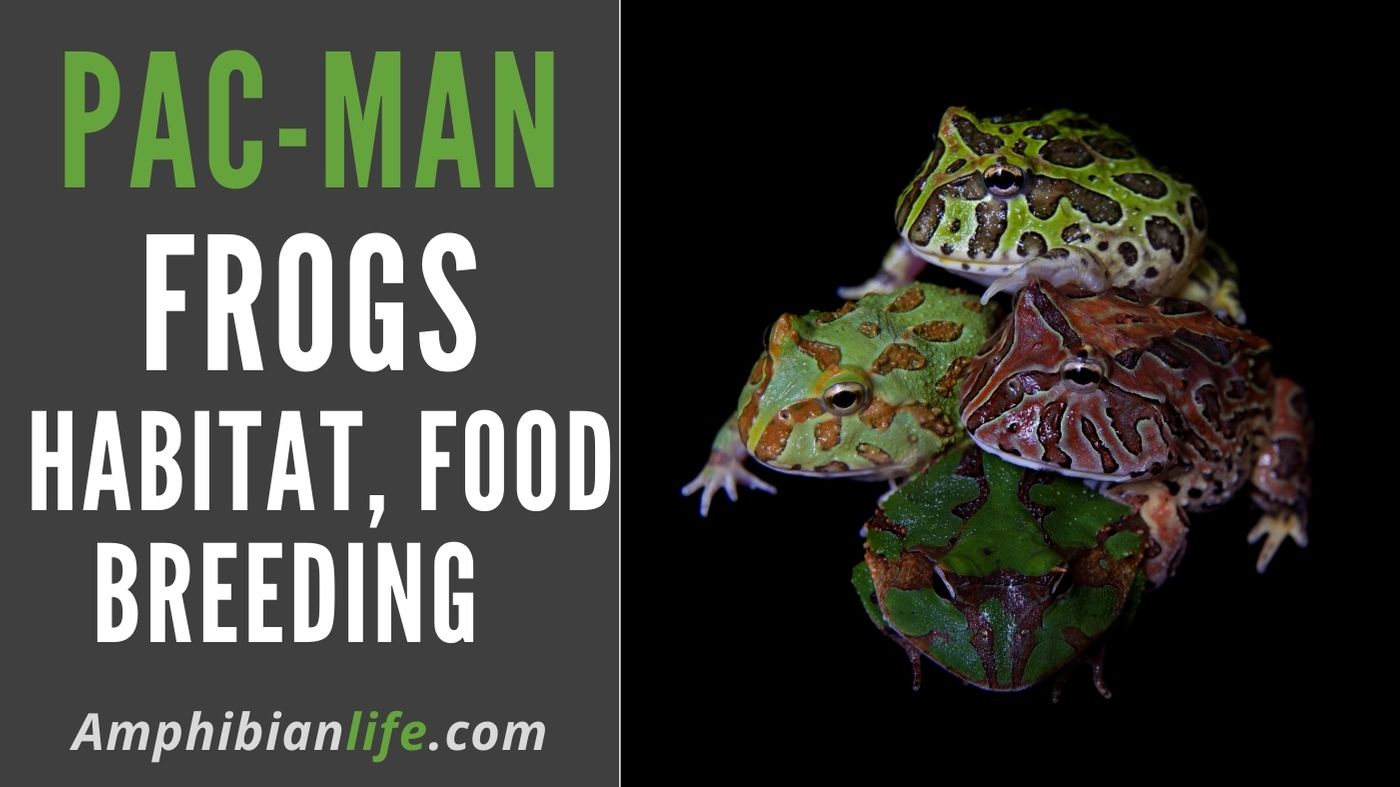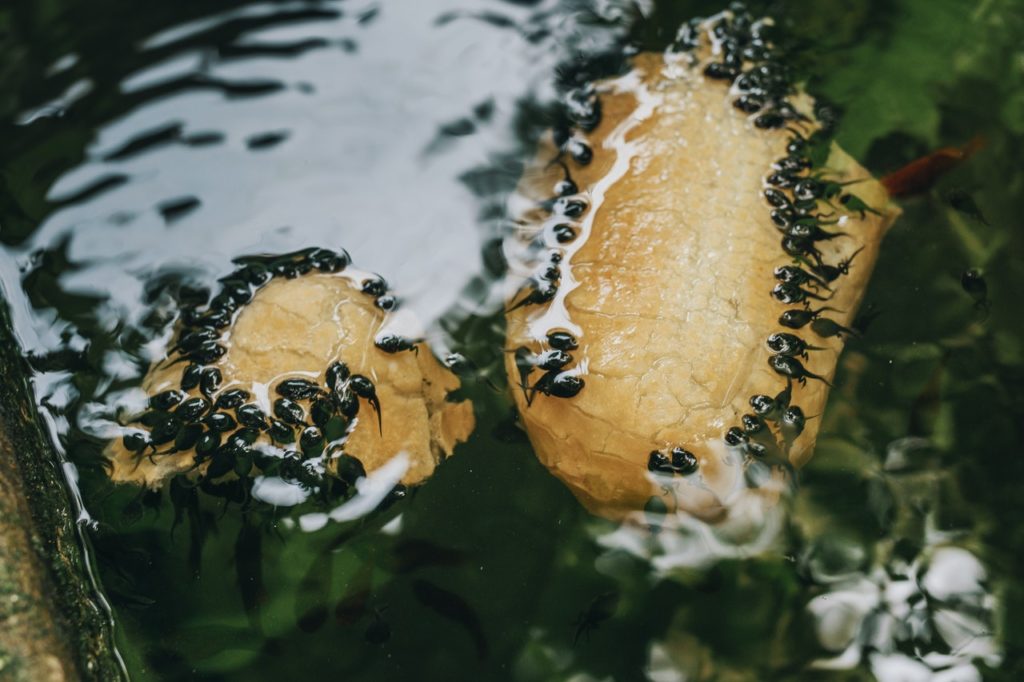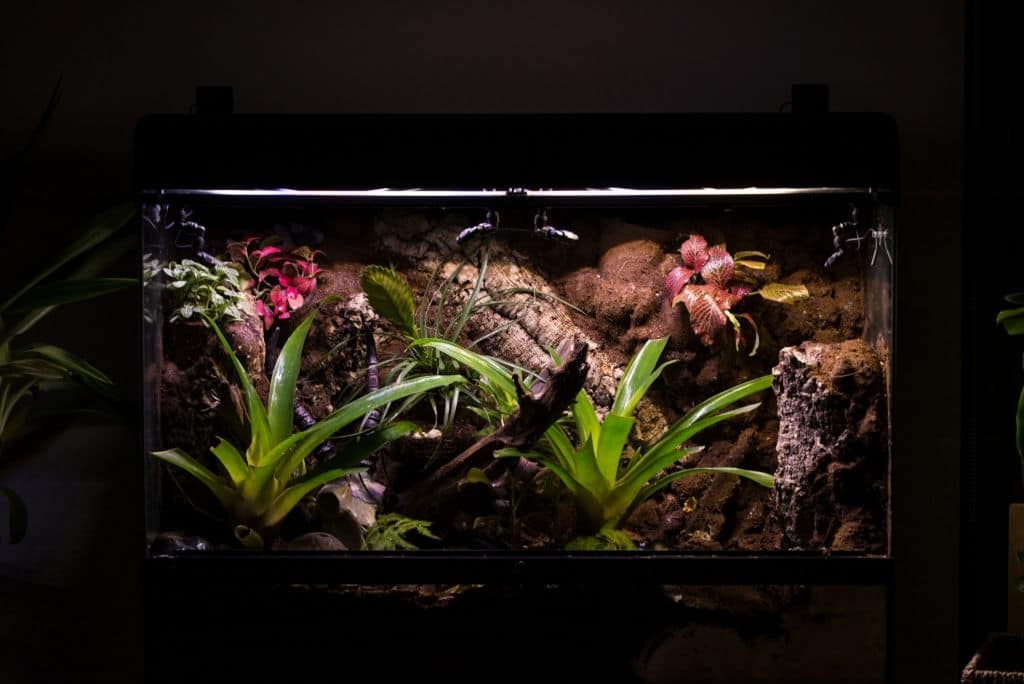
Breeding Pacman frogs is something I want to do sometime next year. But before I can begin, I needed information about how to do this. So as usual, I googled stuff and learned a ton.
Then it hit me, this was not only good for me to know, but for everyone who wants to take a shot at breeding Pacman frogs. So, with that in mind, I started writing this guide.
I hope that you’ll enjoy the article and please send me an email with pictures of your new Pacman frogs!
Breeding Pacman frogs
The first thing you need is a male frog and a female frog – if you get this wrong, and place two same-sex frogs together, you risk injury and even death of your frogs.
To get your Pacman frogs (also known as horned frogs) ready for breeding, you need to imitate the conditions that trigger their reproduction cycle in the wild.
Usually, Pacman frogs hibernate in the winter and reproduce right after they come out of their hibernation process. Place both frogs in a tank with a deep layer of sphagnum moss.
Make sure the container is at an average temperature of 13C (or 55F) and the humidity is a little lower than their average at their terrarium. You should place a lid on top of the container, to avoid any escapes.
Before you start your frogs’ reproduction cycle, give them plenty of food, as they’ll be in the container for 2 to 4 months. Once you place them there, they’ll dig themselves into the dirt.
Replace the lid and mist the moss every week. After at least two months, you can raise the temperature back to normal levels.
The frogs will wake up and rise from their position by themselves. If it doesn’t happen, you can remove them yourself.
Either way, keep your frogs separated and feed them. Once they are fed, place them in the breeding tank.
Your breeding tank should be aquatic, but the water should be shallow enough to prevent drowning.
You should place an aquatic plant for the female to plant her eggs in there, which she’ll do in less than a week.
Making sure your tadpoles frogs grow up properly
Two days after the eggs are planted, they will hatch. You’ll find yourself with hundreds of tadpoles. These tiny animals, just like their parents, are cannibalistic meat-eaters.
If left together you may suffer tadpole losses, but they should be minimal if they are well fed.
You need to change the water regularly and keep a temperature of 24C (or 75F). In a month or so, you’ll have froglets.
You need to make changes to the tanks when they turn into froglets, as they can drown easily. Add a little terrain for them to stand on.
Past this point -and before they turn into adult frogs- there’s an even bigger chance of cannibalism.
You can let the froglets eat each other, or you can put them in separate containers.
The latter decision will prove most beneficial but it’s also the most time-consuming.
If you go down this route, make sure to check the containers every day and change their water daily to prevent diseases.
Taking care of an adult Pacman frog
By the time your Pacman frogs become adults, you need to separate them. Pacman frogs are extremely solitaire and territorial.
Leaving more than two frogs together -if you do not intend to breed them- will result in injury and even death of your frogs.
Place each one of your new frogs in their tank and let them thrive alone, the way they like it.
What is the best food for Pacman frogs?
Do they eat the same thing in all stages of life? How can I feed them?
Even though Pacman frogs are carnivores throughout their entire life, they do not feed off the same things at different stages.
It’s best to understand what is best for each moment of their life to make sure they grow up healthy and let them be at their best.
The only rule of thumb you can use to feed your frogs throughout their life is to avoid anything caught in the wild.
You can kill your frog if you feed him a pesticide-ridden insect or a sick rodent.
Tadpoles

Tadpoles need a protein-rich diet. You can get little frog or tadpole bites at your local pet store.
If you want to use a more “organic” strategy, you can use black worms to feed your tadpoles.
Remember to give them plenty of food or they will start eating each other if they become really hungry.
Bear in mind losses to cannibalistic behavior are almost inevitable. You can only minimize the casualties when properly feeding your tadpoles.
Adult Pac-Man Food
Eventually, you’ll have to feed an adult Pacman frog, and that’s an entirely different beast. They can become pretty large and will need plenty of food to be satisfied.
Luckily for you, adult Pacman frogs will eat anything you throw at them. This doesn’t mean you should be reckless with their diet.
- Highly Nutritious Dried Bugs: Nutrient-packed meal alternative, ideal for reptiles, birds, fish, hedgehogs, sugar gliders Convenient dried bugs without the hassle of managing live food
- Freeze Dried Meal Worms: These meal worms small in size are freeze dried to retain their nutrients and moisture, providing a healthy, moist meal for your pets Perfect as hedgehog worms
- Bulk Supply of Dried Worms: These dried meal worms are available in bulk for your convenience They serve as an excellent source of protein for your pets, including as freeze dried worms for chickens
- Versatile Mealworm Food: Whether you're looking for dried mealworms for turtles, mill worm for chicken, or mealworms dried bulk for reptiles, these freeze dried meal worms are the perfect choice
- Quality Meal Worms Dried: These dried mealworms are a versatile and nutritious alternative to live feed Ideal as bulk worms, they serve as real worms packed with nutrients for your pets
They need a wide variety of animals and a calcium supplement to stay healthy.
Young Pacman frogs should get crickets and cockroaches at first.
- High protein diet for pet frogs
- Sinking micro pellets are easy for frogs and tadpoles to eat
- Specially formulated food for all types of aquatic frogs and tadpoles
- Made with real fish as the first ingredient to simulate your pet's natural diet
- Made in the USA
When they grow older -and larger- they can also eat small rodents, but they shouldn’t get them every day due to their high-fat content.
There’s a key giveaway on how to feed your Pacman frog: you need to give him live prey.
They are predatory animals and they won’t touch anything that’s already dead.
Avoid giving him anything in the mouth, they are aggressive and may hurt you: place the prey inside their tank and wait for the frog to act.
You should avoid overfeeding them: adult Pacman frogs eat every few days or weekly, unlike their tadpole counterpart that needs a meal every day.
Drinking habits
Like any other amphibian, the Pacman frogs need constant access to water.
Provide a shallow container filled with water to satisfy your frog’s thirst.
Bear in mind Pacman frogs tend to defecate in the water. They also like to soak themselves in it to get a little extra humidity.
You need to change the water daily to avoid any health-related issues.
What is the best terrarium for breeding Pacman frogs?

If you are looking to breed Pacman frogs, you need a tank with plenty of water and a few aquatic plants.
Once the eggs hatch and the tadpoles start swimming around, you can use the same aquatic tank for them.
By the time the tadpoles become froglets, you need to add a little bit of land into the mix.
You don’t need to overcomplicate things getting expensive or big terrariums before your frogs reach adulthood. Simple containers will do just fine.
Eventually, when they become full-fledged adults, Pacman frogs need their own space -never house more than one per tank- but they do not need a complicated terrarium.
Pacman frogs need a space ten times as big as they are. A 10-gallon tank will probably do the job right, but it’s best to get a 20-gallon tank just to be sure your Pacman frog can fit nicely inside.
The most important thing about your Pacman frog terrarium is the substrate.
Pacman frogs do not need toys or anything else to spend their time, as they love to dig themselves into the dirt and wait patiently in it.
You should also keep in mind Pacman frogs, like most amphibians, like to soak themselves in water and stay humid, but they do not like to be constantly wet.
You should keep the terrarium moist, but leave a few areas without much water so your frog can choose where to stay.
What is the best substrate for Pacman frogs?

The right substrate could be the difference between a happy frog and a harmed frog.
There are no right choices when it comes to the substrate, but there are wrong choices.
Any kind of substrate that the frog might choke on is a no-go: things like gravel or bark should never be used in your Pacman frog terrarium.
The usual choice for most Pacman frog owners is a loose substrate with a coconut fiber base and a sphagnum peat moss blend. Using fine orchid ark as compost is a fine choice as well.
You definitely need compost in your terrarium to neutralize bad smells.
Your substrate depth should be anywhere between 4 to 6 inches. Check it regularly to get rid of feces and other discharges.
temperature and humidity for breeding Pacman frogs?
Tadpoles need a slightly lower temperature than adult Pacman frogs, as they thrive living under an average of 24C (75F).
Humidity is not much of an issue with tadpoles, as they are constantly underwater.
Adult Pacman frogs need to live under 27C (80F) during the day and expect a slight temperature drop to 24C (75F) during the night.
Humidity needs to be over 60%, but most Pacman frogs are better at 80%.
If you want to breed two Pacman frogs, you need to get the temperature levels down to 13C (55F) to simulate winter and force the reproduction cycle to begin, after they hibernate.
best decorations to use for Pacman frogs vivarium?
Should I keep it simple or use plenty of decorations?

Pacman frogs don’t care about or need any additional things you may place in their terrarium.
They only need the right substrate to hide in and live prey to feed off. You can add a few branches to help your Pacman frog hide and ambush its prey.
Small plants are also a great tool to keep the humidity levels high. The only thing that is a must is a little recipient filled with water for your frog to drink and soak in, but that doesn’t mean you need to keep their terrarium completely basic and minimal!
Further Reading
If you found this article helpful, I might have some other articles that you find interesting! Below are 3 articles that I think you might like!
There aren’t many differences between a Leopard frog and a Pickerel frog are at first sight.
But I think you don’t know about the differences I found! I wrote about them in this article: Leopard frog vs Pickerel frog.
Always wanted to know if frogs can breathe underwater or if they can drown? Find out more about this with the following article: Can frogs breathe underwater?
Want to know more about Pacman frogs? Find out in Pacman Frogs: Habitat, food & breeding cycles
Enjoy reading!


